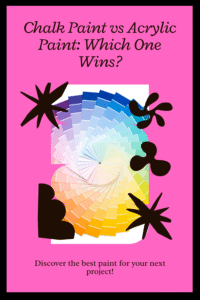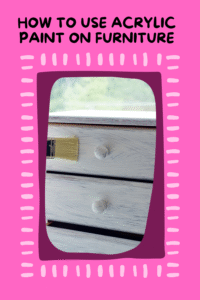Rock painting is an enjoyable and creative activity that has grown in popularity in recent years. From intricate designs and positive messages to beautiful landscapes and quirky characters, painted rocks can brighten anyone’s day.
But to truly bring your ideas to life on a smooth rock surface, you need the right tools. That’s where paint pens come in.
Unlike regular paint, paint pens offer precision, smooth coverage, and ease of use, making them ideal for rock painting.
Whether you’re a seasoned rock artist or just starting out, choosing the best paint pens is key to ensuring your artwork stands out.
In this guide, I’ll walk you through everything you need to know about selecting and using paint pens for rock painting, including the top features to look for, common mistakes to avoid, and even a personal step-by-step guide on how to get started with your first painted rock.
| Product Image | Product Name | Features | Price |
|---|---|---|---|
 |
Sharpie Oil-Based Paint Markers | Includes Black, Red, White, Yellow, and Blue Ideal for rock painting, scrapbooking, posters, and window art Quick-Drying & Water-Resistant |
Check Price |
 |
IJIANG Acrylic Paint Pens for Rock Painting | Bright, eye-catching colors Multi-Surface Coverage Non-toxic, odor-free, waterproof, and quick-drying |
Check Price |
 |
Emooqi Acrylic Paint Pens | Quick-drying ink with long-lasting opacity and glossy finish Durable paint that resists moisture 2–3 mm nibs offer precision for fine details |
Check Price |
 |
36 Color Premium Acrylic Paint Marker Pens for Rocks | Japanese Nylon Extra Fine Tip Water-based Italian ink 0.7mm precision tip for detailed artwork |
Check Price |
 |
JusArt 48 Colors Acrylic Paint Markers | Premium water-based ink Soft brush tip creates 1–8mm lines by adjusting angle Multi-layer grip dividers ensure smooth |
Check Price |
 |
120 Colors Acrylic Paint Pens, Dual Tip Acrylic Paint Markers | Each pen features a 1–5 mm dot tip for bold fills and a 1 mm fine tip for detailed lines No shaking or pressing needed Strong, fade-resistant coverage |
Check Price |
The Benefits of Using Paint Pens for Rock Painting
Before we get into the nitty-gritty of selecting paint pens, let’s look at some of the benefits they offer for rock painting.
Precision and Control
Paint pens allow you to apply color precisely where you want it. This is particularly helpful for painting smaller rocks or intricate designs.
With a brush, it’s easy to accidentally make a mistake or get paint where it’s not needed, but with a paint pen, you can target smaller spaces with ease.
Mess-Free
Unlike traditional paint that requires mixing and brushes, paint pens are much less messy. You simply shake the pen, and the paint comes out when you press the tip on your rock’s surface.
This reduces the amount of cleanup afterward and ensures your workspace stays neat.
Great for Detail Work
If you’re looking to add intricate details to your rock painting, a paint pen is the best choice. The fine tip lets you create thin lines and tiny designs without smudging or bleeding colors together.
Quick Drying Time
Paint pens dry much faster than traditional paints, which can be a game-changer when you’re trying to complete a project in a short amount of time. This also means you can layer multiple colors without worrying about smudging.
Versatility
Paint pens aren’t just for rocks they can be used on a variety of surfaces, including wood, canvas, ceramic, glass, and even fabric. This versatility makes them great for crafting and other art projects beyond rock painting.
How to Choose the Best Paint Pens for Rock Painting
Choosing the right paint pen can be tricky, especially when there are so many options on the market. Below, I’ll cover the main factors to consider when selecting paint pens for rock painting.
Pen Tip Size
The tip size of your paint pen is critical for achieving different effects. A fine-tipped pen is best for adding detail, while a medium or broad tip is perfect for filling in larger areas. For rock painting, I recommend having a variety of tip sizes in your toolkit to suit your needs.
- Fine Tip: Ideal for intricate designs and small details.
- Medium Tip: Works well for shading and larger areas.
- Broad Tip: Great for base colors or large designs.
Color Selection
You want a wide range of vibrant colors in your paint pens. Choose sets that offer both basic colors and metallics, glitter, or even fluorescent options. These specialty colors can really make your designs pop and add a unique touch to your artwork.
Paint Quality
The quality of the paint is also very important. You’ll want a paint pen that provides smooth coverage without streaking or clumping. Look for pens that use acrylic-based paint, as they dry quickly and are durable enough to withstand outdoor conditions if you plan to display your painted rocks outside.
Drying Time
As mentioned earlier, the drying time is an essential factor. You want a paint pen that dries fast enough to allow you to continue working, but not so fast that you can’t make adjustments. Acrylic-based paint pens typically dry within 1-5 minutes, but some pens may take longer depending on the paint’s thickness.
Durability and Waterproofing
For rocks that will be placed outside, it’s important to choose a paint pen that is durable and waterproof.
Some pens are specially designed for outdoor use and are fade-resistant and waterproof. If your painted rocks will be exposed to the elements, make sure to pick pens that can withstand weather conditions.
Step-by-Step Guide to Rock Painting with Paint Pens
Now that you know how to choose the best paint pens for rock painting, let’s go over the process.
Whether you’re a beginner or a seasoned artist, this step-by-step guide will help you achieve beautiful, professional-looking results.
Step 1: Gather Your Supplies
To get started with rock painting, you’ll need the following materials:
- Rocks (clean and smooth, preferably river rocks)
- Paint pens (choose your favorite colors and tip sizes)
- Paper towels or cloths for wiping tips
- Clear acrylic sealer (optional but recommended for protection)
- Pencil (for sketching designs)
Step 2: Prepare Your Rocks
Start by cleaning your rocks to ensure that they’re free of dirt, dust, and any oils that could affect the paint. Wash them thoroughly with soap and water, then allow them to dry completely. You can also lightly sand the surface if the rock has rough spots.
Step 3: Sketch Your Design
Before you start painting, it’s a good idea to sketch your design lightly with a pencil. This helps you plan your composition and ensures you don’t make mistakes when you start using your paint pens. Keep your design simple if you’re a beginner, or use reference images if you’re feeling ambitious.
Step 4: Start Painting
Once your design is ready, start applying the paint using your pens. Begin with the larger areas first and work your way toward the smaller details.
Don’t forget to shake the paint pens before use to ensure the paint flows smoothly. For finer lines, use the smallest tip size available.
Step 5: Add Layers and Details
Let each layer of paint dry before adding additional layers to prevent smudging. If you’re using multiple colors, start with the lightest shades and layer on darker shades for depth. Once the base colors are in place, add details like outlines, shading, and intricate designs.
Step 6: Seal Your Artwork
Once your rock painting is complete and the paint has fully dried, you can choose to seal your design with a clear acrylic sealer.
This step is particularly important if your painted rocks will be displayed outdoors. It helps protect the paint from the elements and prevents it from fading over time.
Step 7: Display or Gift Your Creation
Finally, once your rock painting is sealed and dry, you can display it in your garden, home, or office, or give it as a thoughtful gift to a friend or loved one.
Common Mistakes to Avoid in Rock Painting
While rock painting with paint pens is relatively easy, there are a few common mistakes that beginners (and even some experienced artists) often make. Here’s how to avoid them:
Not Preparing the Rock Properly
Skipping the step of cleaning and drying your rock can cause the paint to not adhere well to the surface. Always make sure your rock is clean, dry, and smooth before starting.
Using the Wrong Tip Size
If your design requires intricate detail, using a broad or medium-tip pen can make it difficult to get the precision you need. On the flip side, using a fine-tip pen for large areas can lead to streaking. Choose the right tip size for the job.
Not Allowing Enough Drying Time
It’s tempting to rush through the process, but it’s important to allow each layer of paint to dry before moving on to the next. Failing to do so can result in smudging or uneven coverage.
Not Sealing the Rock
If you plan to keep your painted rock outside, skipping the sealer can lead to fading, smudging, or the paint coming off. A clear acrylic sealer protects your artwork and helps it last longer.
Overloading the Pen
If your paint pen is too full, it may drip or cause the paint to flow unevenly. Always wipe the tip before using it to avoid messy application.
Conclusion
Paint pens are an essential tool for rock painting, offering precision, vibrant color, and ease of use. By following the steps outlined in this guide and avoiding common mistakes, you’ll be well on your way to creating stunning rock art that can brighten up any space or serve as a thoughtful gift.
So, what are you waiting for? Grab your paint pens, find some smooth rocks, and start creating! And don’t forget to share your masterpieces with others who knows, you may even inspire someone else to start painting rocks!
FAQs
- What is the best type of paint pen for rock painting?
Acrylic-based paint pens are the best for rock painting as they offer vibrant colors, durability, and quick drying times. - Can I use regular markers for rock painting?
Regular markers aren’t designed for rock painting and may not adhere properly or provide long-lasting results. Paint pens are a better choice for durability and precision. - How do I prevent paint smudging when painting rocks?
Allow each layer of paint to dry completely before adding another. Additionally, use a clear acrylic sealer to protect your artwork. - Are there paint pens specifically designed for outdoor use?
Yes, many paint pens are specially formulated for outdoor use and are waterproof and fade-resistant. Look for these features if you plan to display your painted rocks outdoors. - Can I paint over mistakes with paint pens?
Yes, you can paint over mistakes! Just wait for the layer to dry, then use your paint pen to cover it. Make sure to let the new layer dry completely.


